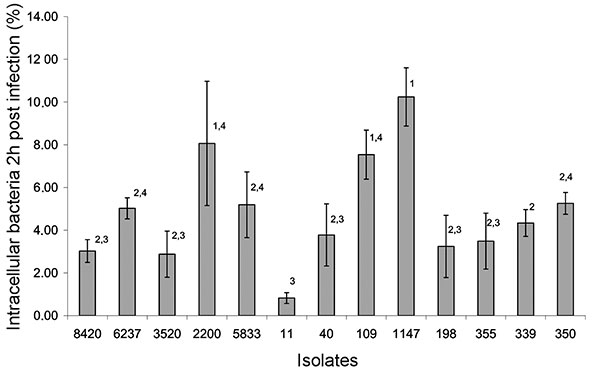Volume 10, Number 12—December 2004
Research
Cats as a Risk for Transmission of Antimicrobial drug−resistant Salmonella
Figure 2

Figure 2. Invasion of Salmonella strains in the human intestinal epithelial cell line T84. The y-axis shows the percentages of intracellular bacteria 2 hours postinfection, relative to the initial number of bacteria, incubated with the cells. The x-axis shows isolate numbers. All isolates derived from the group-housed cats had the same invasion percentage as strains 198 and 355 (data not shown). Isolates 55 and 1145 had the same invasion percentage as strain 1147 (data not shown). Data not sharing superscript numbers indicate statistically significant differences (p<0.05).
Page created: April 14, 2011
Page updated: April 14, 2011
Page reviewed: April 14, 2011
The conclusions, findings, and opinions expressed by authors contributing to this journal do not necessarily reflect the official position of the U.S. Department of Health and Human Services, the Public Health Service, the Centers for Disease Control and Prevention, or the authors' affiliated institutions. Use of trade names is for identification only and does not imply endorsement by any of the groups named above.